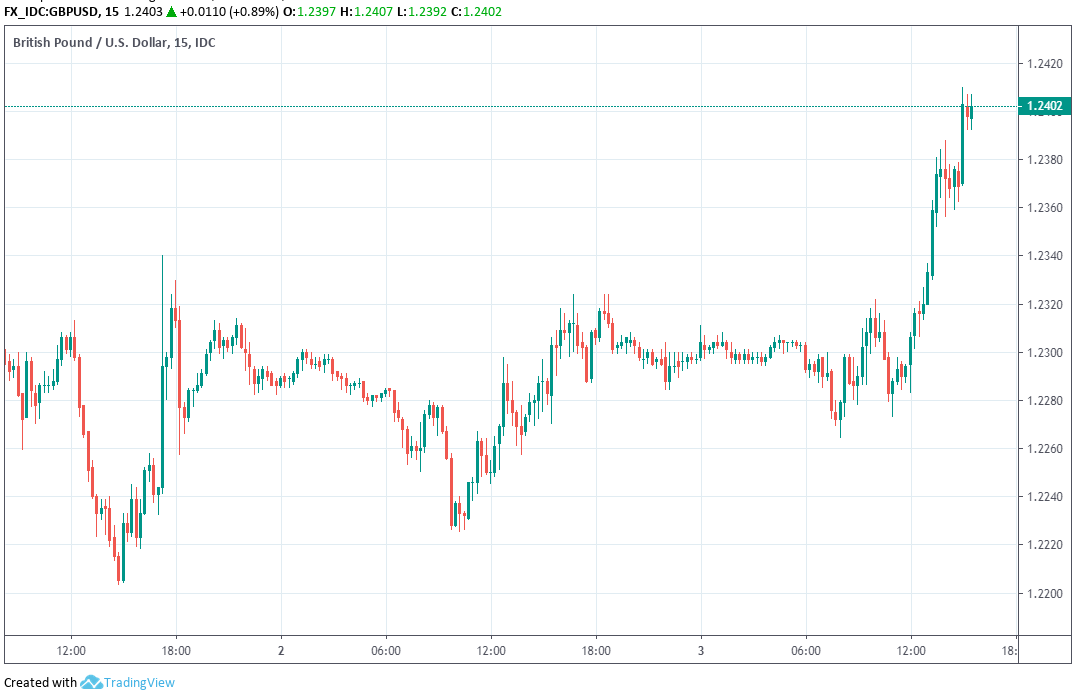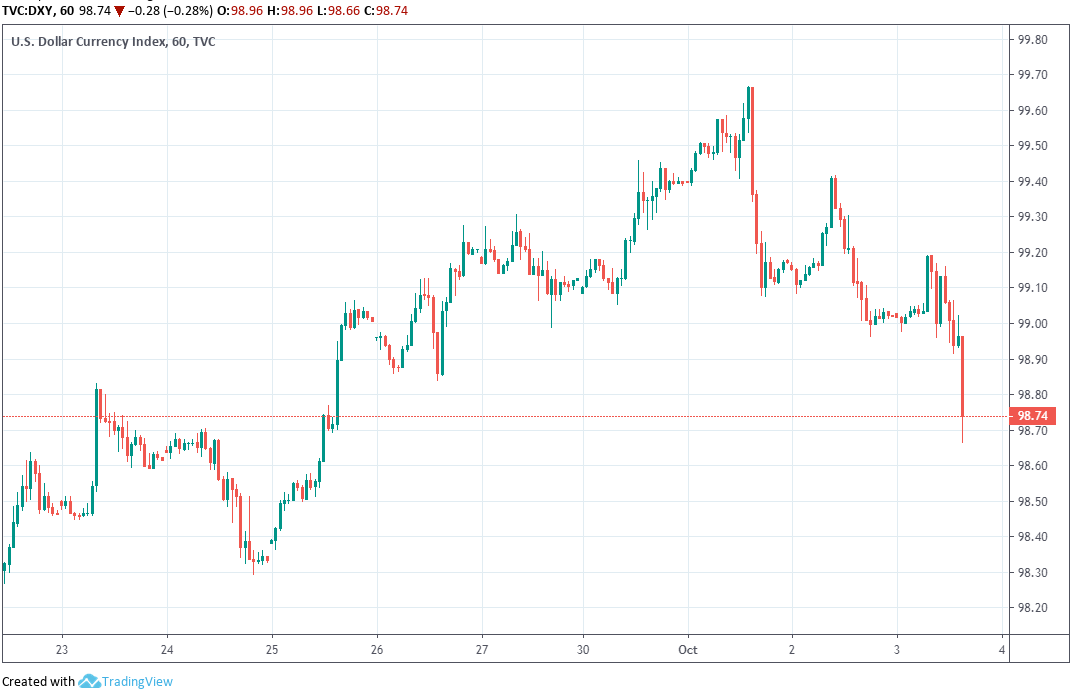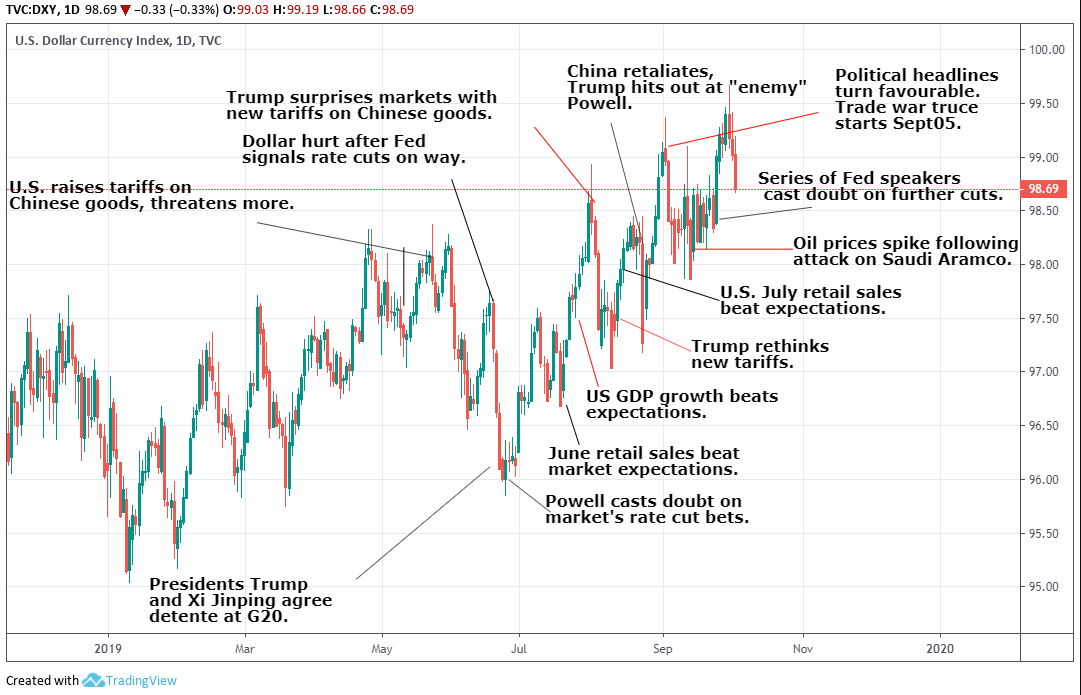U.S. Dollar Crumbles after ISM Survey Calls Time on Economic Outperformance
- Written by: James Skinner
-

© Jacob Lund, Adobe Stock
- USD crumbles after ISM services PMI collapses in September.
- Survey responses cite tariffs, labour market and economic fears.
- Comes after ISM manufacturing shows factory sector rolling over.
- With weakness in both sectors, U.S. outperformance may've ended.
- Data argues for Federal Reserve to cut interest rates more aggresively.
- USD index in danger of further declines, GBP/USD draws support.
The Pound-Dollar rate rose Thursday as the U.S. greenback crumbled after an influential Institute of Supply Management (ISM) survey suggested the mighty services sector hit a rough patch last month, just as the factory downturn deepened, placing the Federal Reserve (Fed) under the spotlight.
September's ISM Non-manufacturing PMI came in at 52.6, down sharply from 56.4 in the prior month and when markets as well as economists had looked for a descent to only 55.1. Thursday's numbers come days after the institute said the U.S. manufacturing PMI dropped to a decade low last month.
Current activity levels among services firms fell by 6.3% last month, a steep decline, although not as large as the fall in new work inflows. New orders were down 6.6% in September while the employment sub-index fell 2.7%. The only subcomponent to rise last month was the prices index which, up 1.8%, was an unwelcome development.
"The worrisome trend in ISM releases continued with the non-manufacturing index falling to 52.6 in September. That's still in expansionary territory, but well off the highs seen in mid-2018, and only slightly above the cycle low hit in 2016," says Katherine Judge, an economist at CIBC Capital Markets.

Above: Pound-to-Dollar rate shown at 15-minute intervals.
"While this survey is supposed to reflect actual activity, the panel design of the survey makes it susceptible to changes in sentiment, however, and could therefore reflect uncertainty surrounding the political and trade environments, particularly given that some of the verbal responses indicate that demand for services remained fairly solid, Judge adds.
PMI surveys measure changes in industry activity by asking respondents to rate conditions for new orders, production, hiring intentions, prices and inventories. A number above 50.0 indicates industry expansion while a number below 50 is suggestive of contraction. The survey results often correlate with official measures of output and growth although they can often be wide of the mark too.
Thursday's ISM report comes late in a session that also PMI surveys for services industries disappoint right the way across Europe. The data has provided economists with a strong signal that ongoing weakness in the global manufacturing industries might now be spilling over into services sectors. Chinese growth is slowing, Europe's economy is at best stagnating and Germany already looks to be in recession due mainly to the damaging impact of President Donald Trump's trade war.

Above: Dollar Index shown at hourly intervals.
"Both key ISM surveys are pointing to a major slowdown in US growth rates. We are forecasting US GDP growth of 1.3% for 2020 versus a consensus estimate of 1.8% with the clear implication that the Federal Reserve has more work to do," says James Knightley, chief international economist at ING.
The mounting global economic downturn has already forced central banks into action the world over including the Federal Reserve, but some economists have long seen the Fed's earlier rate hikes as having gone too far while markets have been signalling for a while now that its rate cuts to date are not enough. Whether or not the Fed indulges investors who've been betting in the derivatives market that the bank will cut rates at least three more times in the next year or so will be key to the Dollar outlook.
U.S. rates are at least twice as high those of other major central banks except those in Canada and Norway, even after the policymakers cut the Fed Funds rate twice earlier this year. The contrast between the 2% rate of the Federal Reserve and its 0% European equivalent is one reason the Dollar has been so strong in recent months, because the U.S. bond market is effectively the only game in town for yield hungry investors.
"The market is reacting to the signs of a slowdown in the global economy. The fact these ISM numbers are printing weaker shows even the US is not immune. The slowdown in September has been rather sharp," says Mark Wilson at Markets.com. "The question now is whether and when the Fed steps in. Or more importantly, how big goes the Fed? We know they are prepared to ease, these PMIs give them added justification. I think we can anticipate expectations for more aggressive stimulus."

Above: Dollar Index shown at daily intervals.
Time to move your money? Get 3-5% more currency than your bank would offer by using the services of foreign exchange specialists at RationalFX. A specialist broker can deliver you an exchange rate closer to the real market rate, thereby saving you substantial quantities of currency. Find out more here.
* Advertisement




